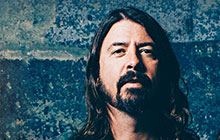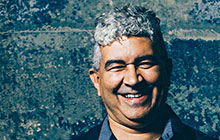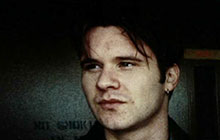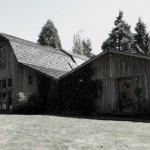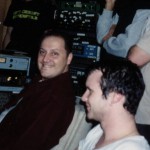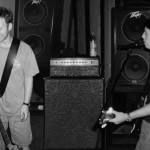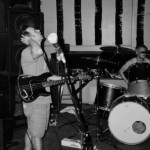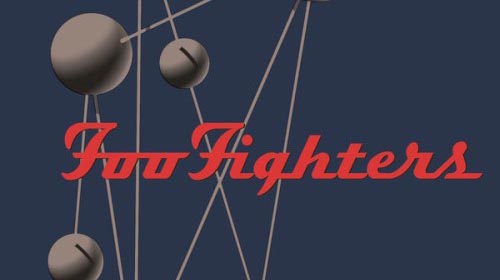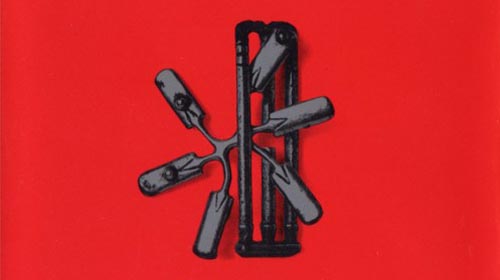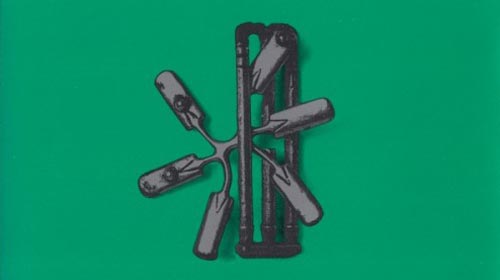Session Information
Since the late 1980s Dave Grohl had recorded his own music almost exclusively in one manner – with friend Barrett Jones, and for the most part at his Laundry Room Studio in Arlington and Seattle. However, for the second Foo Fighters album, and the first with an actual band of musicians, Grohl decided he wanted a change. “I've made punk records and they're fun and great, and it's quick and there's a passion. But I did that with the first record. I've never made a big, proper rock record before, so why not? People just don’t seem to do it any more, so we might as well take a shot.”
The band approached Englishman Gil Norton to produce the record, best known for his work with The Pixies, producing the albums ‘Doolittle’, ‘Bossanova’ and ‘Trompe le Monde’. “I admired Gil for a while,” said Grohl. “I thought he'd be the right man for these songs because they've got the potential to be great pop songs, and a little polish can do no harm.” He was specifically impressed with his work on 1991s Trompe le Monde - “I love it for the way you can hear the band falling apart, getting scattered, shooting off in a million different directions.” He didn’t realize it at the time, but ‘band falling apart’ would be a very apt description of future events, albeit in a more literal manner than he described.
Norton was sent demo recordings from their recent pre-production sessions as well as a copy of the first album and agreeing to work on their second record was an easy decision according to the producer - “When I first heard the first Foo Fighters album I got the sense of a really accomplished songwriter, and I really liked the raw power of it. I loved the demos that Dave had done for the new album, so I knew we had a great batch of songs.”
One of the many reasons Grohl liked to record with Barrett Jones in his Laundry Room Studio was the privacy. The small home studio meant no prying eyes, and this was something he was keen to try and maintain as much as possible this time around. Potential recording locations were scouted and one that seemed to tick all the boxes was Bear Creek Studio. Located 30 minutes from downtime Seattle the studio was both close to home and secluded, situated within a 10-acre farm surrounded by woodlands. The studio itself is a century old barn converted into a recording studio with a large 60-foot by 40-foot live room, another 20×40 foot space with many isolation rooms and a large control room. Upstairs is an apartment to sleep six, fully kitted out with a kitchen and utilities, something the band would look to make use of during their stay.
Before entering Bear Creek Gil Norton and Dave Grohl spent several days together at a local hotel, Norton stripping the songs back to their basic components and challenging the songwriter to “pinpoint the essential truths and underpinning each one.” This was a challenge for Grohl, a big departure from his “try and record songs as quickly as possible” approach of the first album. Wanting to make things with Norton work he took up the challenge over a few intense days in the hotel room. With that stage complete, the entire band then regrouped with Norton at a rehearsal space to further tweak the songs together. “[Gil] came in and we refined the arrangements with him. During this time many details changed, some guitar parts and bass lines got rewritten” Dave recalled. “It was like that the whole time, really, the tracks were never really complete,” added bassist Nate Mendel.
Recording of Foo Fighters second album officially commenced at Bear Creek on November 18th, 1996. They had already suspected it was the case in the previous weeks but from day one proper the band realized that working with Norton was going to be vastly different to anything they had previously experienced. For Grohl, most of his recording had either been alone, with his friend Barrett Jones or with relatively laid-back producers like Steve Albini and Butch Vig. For Pat Smear, Nate Mendel and William Goldsmith they were also very much used to the loose, punk rock attitude to recording. Slightly out of tune? Not in perfect rhythm? No problem. For Gil Norton, the opposite was true. His ethos was that nothing less than perfection was required from everyone.
“Gil has a reputation as being a real taskmaster in the studio,” as Dave Grohl put it. “He cracks the fucking whip and anyone who's ever worked with him will say the same thing. He accepts nothing but absolute perfection in what you do – whether that means dissonant, noisy chaos or a perfect pitch, perfect performance pop song, he needs it to be the best. So, working with him was really fucking hard.”
Drummer Goldsmith and Bassist Mendel, in particular, were immediately feeling the pressure and questioning their own abilities. “I was fucking terrible and Will was having his own challenges,” Nate recalled in the 2011 Foo Fighters documentary Back & Forth. “I could tell when I had to do something a million fucking times that it was taking longer than I wanted it to and it was sort of my first realization like 'oh, I'm not a fully formed musician', I've got to keep getting better,” he added. The duo would be referred to in a now well-known put down as the “rhythm-less section” by Norton.
Mendel may have exaggerated when he stated the requirement to re-do something “a million times,” but the real numbers were still extraordinary. Whilst tracking the drums Goldsmith would work for 13 hours a day and on one song was asked to re-do the take a staggering 96 times. “I gave everything I could. I couldn't believe at the end of it everything was done, and I had got through it” said the drummer. It wasn’t just producer Norton that Goldsmith was feeling pressure from, however. Whilst they were now one cohesive unit it was still clearly established that Dave Grohl was the primary songwriter, in control of how the songs should sound. This would be the first time he’d be watching over someone recording the drums on his own songs, a fact William was very much aware of. The anxious drummer constantly felt that whichever song he was working on, Grohl “already had a drum part in his head” and that whatever he was doing would be “wrong”. His feelings were very much correct. “When I've written a song, I have kind of a clear idea of where the basic root accents should lie. That's a fancy way of saying, I know what the drums should sound like in my head” Grohl later admitted.
Despite the problems progress was slowly being made, with basic tracks for previously demoed songs like ‘Enough Space’, ‘Hey, Johnny Park!’ and ‘My Hero’ being laid down, as well as new songs ‘See You’ and ‘Wind Up’. Whilst progress was being made, tensions between band members and producer continued to increase as the days went on, morale inevitably heading in the opposite direction.
Musical ability and a perfectionist producer were not the only issues surrounding recording. Dave Grohl married Jennifer Youngblood in the summer of 1994 but by 1996 both had started to realize they may have rushed into things. “We were kids and honestly we just shouldn’t have done it: even in the time we were engaged I think we both realized that we probably shouldn’t get married”. Rumors had circulated in the press that Grohl was seeing Veruca Salt frontwoman Louise Post and whilst he has never directly commented on it, Post claims that much of the album was written about her, and their relationship. ‘Walking After You’, ‘Doll’ and ‘My Poor Brain’ are all songs she is adamant are about her.
Whatever the truth, mid-December saw a visitor to the studio – a legal representative of Jennifer Youngblood serving Grohl with divorce papers. It was yet another problem on top of everything else and producer Norton understood that it was naturally a distraction for Grohl. “Dave didn’t get overly emotional about it with me, and I didn’t see him crying or anything, but obviously it was a big part of his life and a concern at the time,” said the Englishman.
Everyone agreed that a break was necessary and so just before Christmas 1996 recording was halted. The band members all went their separate ways for the holidays although with Grohl kicked out of his marital home, for him that meant returning to his mother in Virginia.
At the point of the time-out, the band had tracked fourteen songs, although none were considered finished, with many concerns from the musicians and producer alike. The band planned to re-convene in the new year to continue recording of the second Foo Fighters album.
